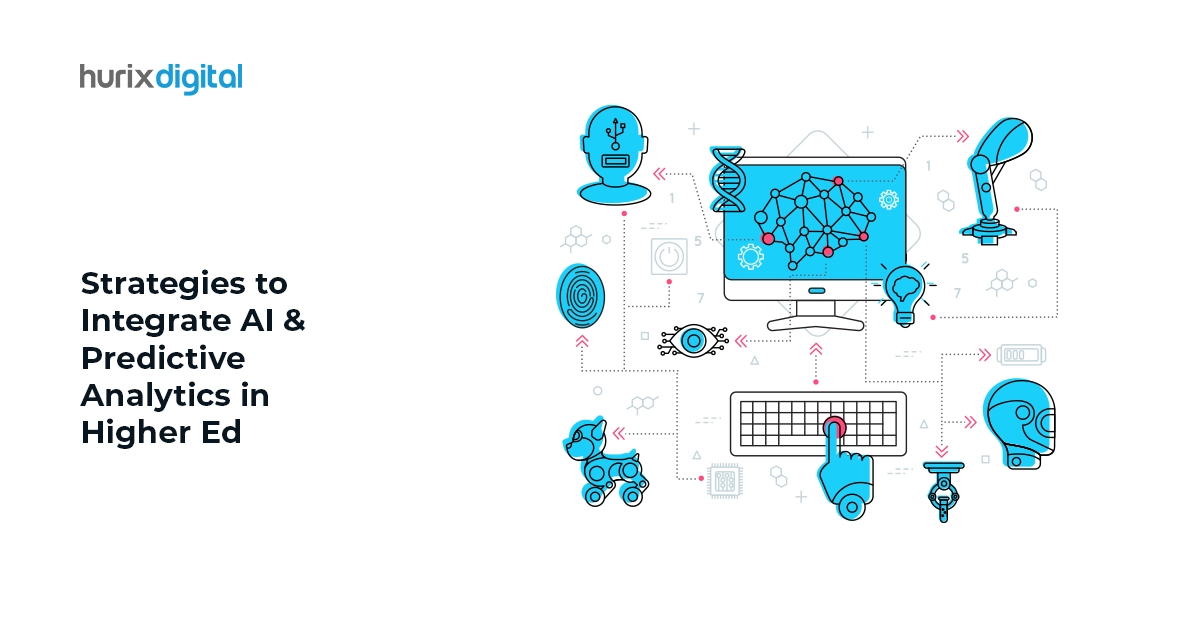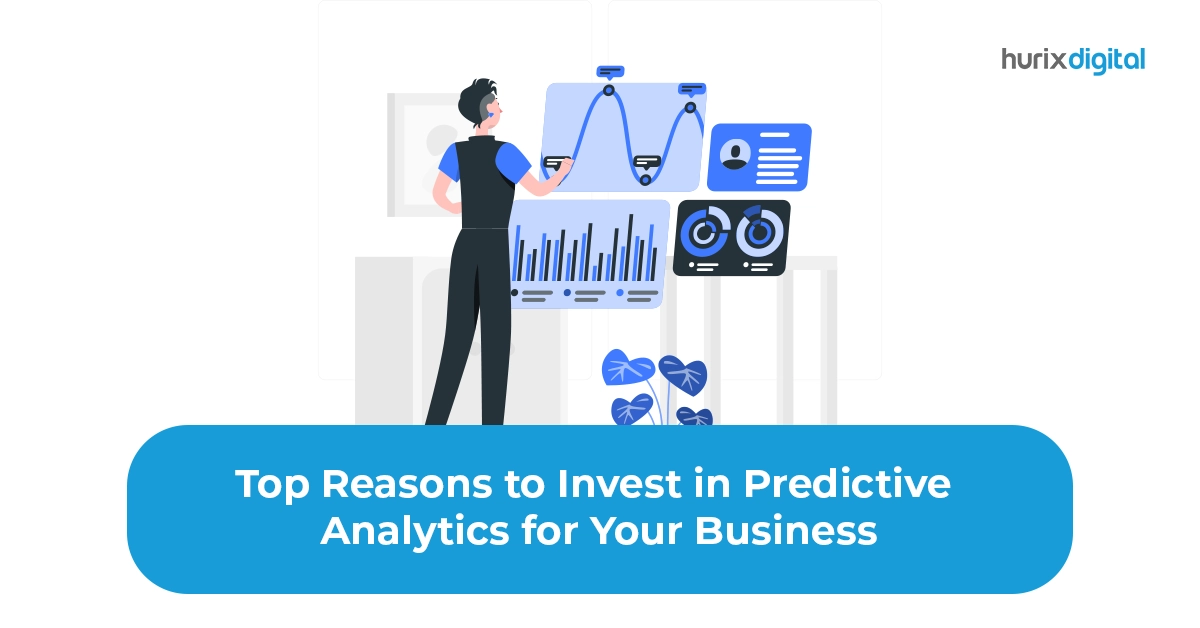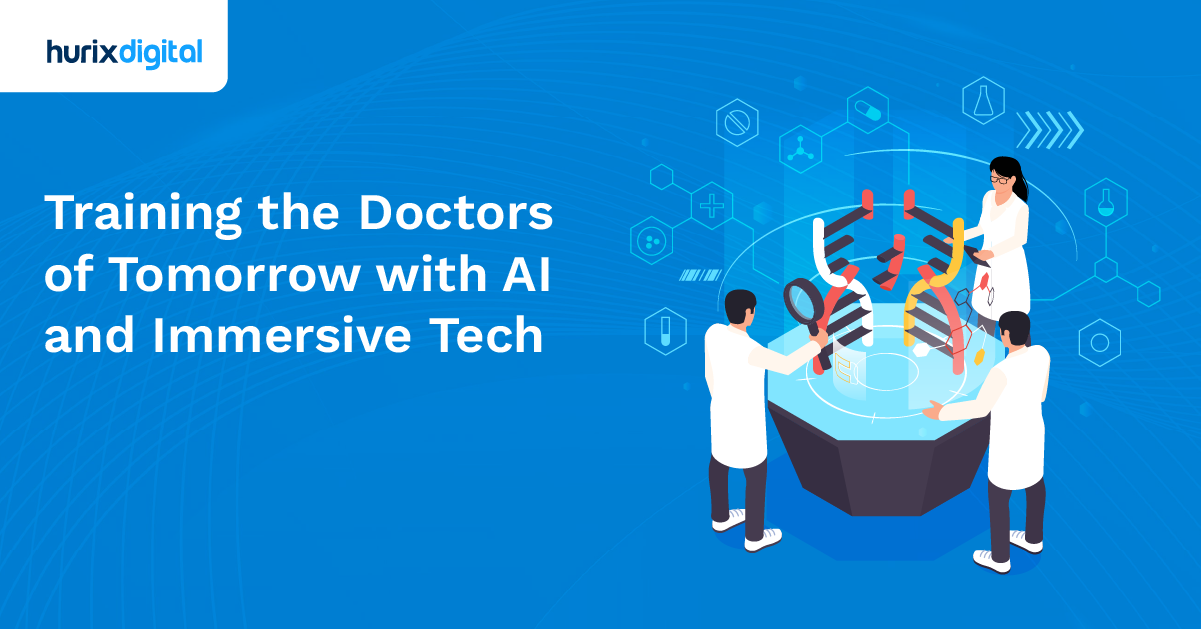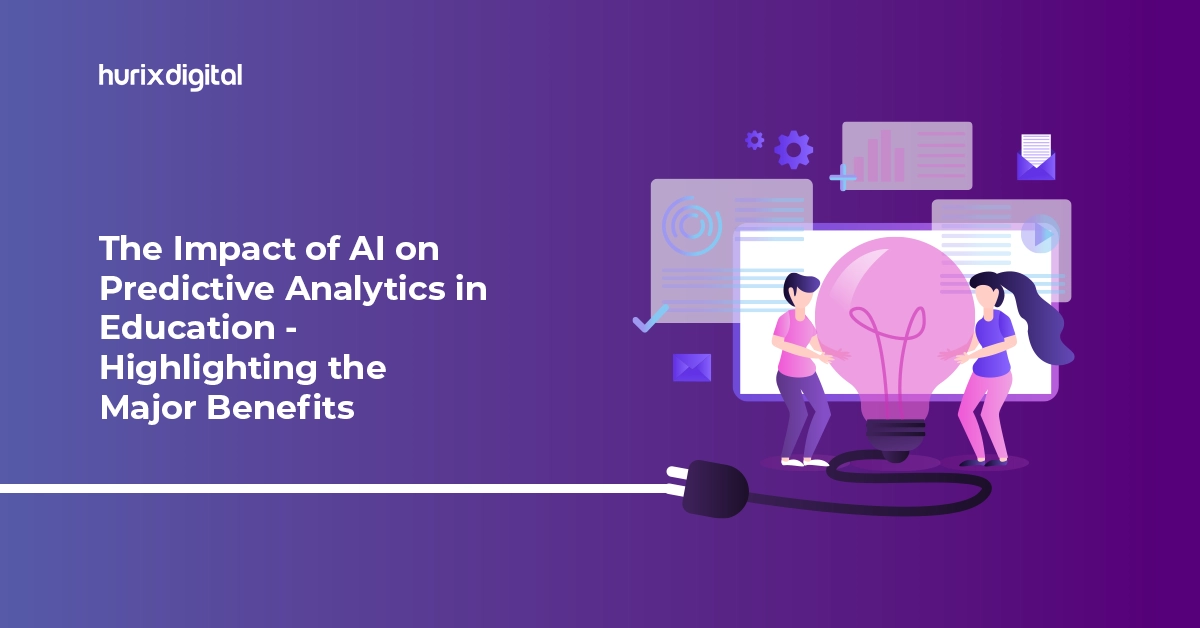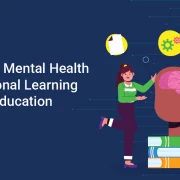
Integrating Predictive Analytics and AI Into the Higher-Ed Curriculum
Summary
Discover how to integrate predictive analytics and AI into higher education curricula. This blog discusses methods for incorporating these technologies to enhance academic programs.
The world of education is changing. Thanks to progress, schools are adopting creative ways to teach and learn. Predictive analytics and artificial intelligence (AI) are becoming tools that offer opportunities to personalize the learning journey, identify students who may need support, and improve curriculum planning.
Schools are embracing teaching methods driven by technological advancements. Let’s examine how Chief Academic Officers (CAOs) can harness the potential of analytics and AI to enrich their institution’s academic programs and ensure students’ success.
Table of Contents:
Predictive Analytics in Curriculum Design
About 26% of students opt for one online course, highlighting the notable shift happening in higher education. This growing preference emphasizes the importance of adopting creative methods, for designing curricula.
Predictive analytics has become an asset in this aspect, providing advantages for customizing educational programs. Now, let’s consider some ways predictive analytics can improve the planning of an academic curriculum in education.
1. Identifying At-Risk Students
Predictive analytics can highlight students who are at risk of falling behind or dropping out. This allows for early intervention through personalized support services, tutoring, or adjustments to learning strategies.
2. Tailoring Learning Pathways
Analyzing student information allows schools to create learning paths that align with each student’s abilities, challenges, and interests. This might include suggesting courses offering educational materials or presenting alternative learning styles.
3. Enhancing Course Materials and Teaching Methods
Using analytics helps in making choices regarding course content and teaching approaches. For instance, reviewing student engagement data can identify areas where lectures could benefit from elements or multimedia content.
Also Read: Best Practices in Online Curriculum Development for Higher Education
The Power of Predictive Analytics and AI in Higher Education
The educational market is projected to hit $336.98 billion by 2026, driven by the increasing need for flexibility and accessibility. The rise of online learning, along with advancements, is pushing institutions to adopt new and creative teaching methods.
Predictive analytics and Artificial Intelligence (AI) are becoming players in this changing environment. These tools have the potential to transform education significantly by:
1. Personalized Learning Experiences
AI-powered platforms can analyze student data to identify learning styles, strengths, and weaknesses. This allows for the creation of personalized learning pathways with tailored content, resources, and assessments that cater to individual student needs.
2. Proactive Student Support
Predictive analytics can identify students at risk of academic failure or dropping out. By analyzing past data on academic performance, attendance patterns, and extracurricular activities, institutions can proactively intervene and offer targeted support services. This could include tutoring programs, academic advising, or mental health resources.
3. Streamlined Curriculum Development
AI technology can examine data related to student achievements, course materials, and current industry patterns. By utilizing this data-driven method, educational programs can be enhanced to keep pace with changing job market requirements.
Incorporating Predictive Analytics and AI into Educational Programs
Integrating analytics and AI into educational programs necessitates thorough planning and precise implementation. The following are factors for Chief Academic Officers (CAOs) to consider:
1. Strategies for Implementing AI in Higher Education
| Strategy | Description |
| Data Collection and Management | Robust data collection systems are needed to gather student performance data, demographics, and course engagement metrics. Ensuring data privacy and security is crucial. |
| Choosing the Right Tools and Techniques | A variety of AI-powered tools and techniques exist, each with specific strengths. CAOs should evaluate their needs and choose solutions that align with institutional goals. |
| Developing AI-powered Learning Modules | AI can be used to create interactive learning modules, simulations, and adaptive quizzes that provide personalized feedback and opportunities to practice key concepts. |
| Enhancing Faculty Training | Faculty training on interpreting data, utilizing AI-powered tools, and integrating them effectively into teaching practices is essential to fully leverage AI’s potential. |
| Intelligent Tutoring Systems | AI-powered tutors can provide on-demand support, answer questions, and offer personalized guidance throughout the learning process, benefiting students who may lack access to one-on-one tutoring or require additional support. |
| Automated Feedback and Assessment | AI-powered tools can automate grading for certain assessments, freeing up faculty time for more in-depth feedback and personalized interactions. AI can also analyze student responses to identify areas needing additional instruction. |
Integrating AI and Predictive Analytics: Challenges and Considerations
By overcoming these challenges and developing plans to address them, universities can unlock the power of AI and predictive analytics to create a personalized, effective, and equitable environment for every student.
1. Safeguarding Data Privacy and Security
Educational institutions must implement procedures and robust security measures to guarantee that student data (including grades, attendance records, and demographic information) is collected ethically, stored securely, and used exclusively to improve learning results.
Students should be informed about how their data is being utilized and given the choice to opt out of data collection practices. Institutions need to be transparent about their data-handling procedures to foster trust among students.
2. Training and Development for Faculty
Faculty members may lack expertise in data analysis or interpreting insights derived from AI tools. Hence, it is essential to provide them with training on data literacy and how to leverage data insights effectively in their teaching methodologies.
Faculty development initiatives should empower educators with the knowledge required to incorporate AI tools into their teaching practices. This may involve training on utilizing AI-driven platforms, implementing tutoring systems, and delivering constructive feedback based on AI-generated analyses.
3. Ethical Considerations Surrounding AI in Education
The effectiveness of AI algorithms hinges on the quality of the training data they receive.
When the information utilized to educate these algorithms is prejudiced, it may result in consequences for students. Educational institutions must recognize any prejudices in their data. Work towards minimizing them.
Relying heavily on AI for duties such as grading or offering feedback could lessen the significance of engagement in educational settings. The personal touch of teaching, encompassing mentorship, tailored support, and nurturing thinking abilities, continues to be invaluable.
Read Success Story: Hurix Digital Develops 100 Interactive Learning Programs for a Leading US-Based Education Institution in Just a Year
Conclusion
Institutions can enhance their learning environment by adopting analytics and AI, which can lead to education and better student results. This approach also enables institutions to recruit and retain talent effectively.
Hurix Digital, an educational technology provider, offers support in implementing AI and predictive analytics strategies into your programs. So what are you waiting for? Schedule a call with us today to explore how we can enhance your services and empower students for success.

Currently serving as the Vice President of Technology Delivery Operations at HurixDigital, a prominent global provider of digital content and technology solutions for publishers, corporations, and educational institutions. With over 16 years of experience spanning EdTech and various domains, I hold certification as a SCRUM Product Owner (CSPO). My expertise includes operations, finance, and adept people management skills.
